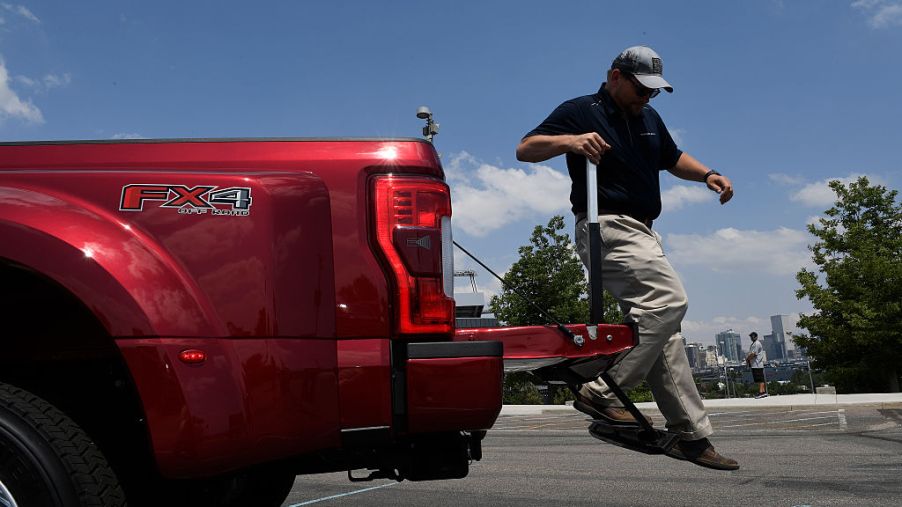
GVWR vs. Towing Capacity: What’s the Difference for My Truck?
A truck is specifically designed for many functional services. You can haul and tow a variety of things. Unlike a typical car, a truck’s capability rules. But how exactly do you determine your truck’s towing capacity? And what’s the difference between a vehicle’s towing capacity and GVWR?
The difference between towing capacity and GVWR
According to Kelley Blue Book, towing capacity “refers to the maximum weight your vehicle is able to pull while towing,” whether it’s a trailer, boat, or something else. Your truck’s towing capacity is simply the amount of weight it is capable of pulling. But a lot of factors go into a truck’s towing capacity. This is where GVWR comes in.
The GVWR, or gross vehicle weight rating, is determined by a truck’s manufacturer and defined as the maximum weight capacity of a vehicle without the trailer. Unlike curb weight, which is simply the total weight of a vehicle, a truck’s GVWR takes into account the weight of the actual vehicle, as well as passengers and cargo inside, to determine how much weight it can handle.
According to Canada’s Driving website, your towing capacity, GVWR, and payload capacity are determined by a variety of things, like its chassis, engine and transmission, overall configuration, and rear-axle ratio.
How GVWR and other factors affect towing capacity
GVWR helps determine your truck’s towing capacity because a vehicle can only tow as much as it is rated for. According to Curt Manufacturing, GVWR is simply “the maximum weight capacity of a vehicle without a trailer attached.” These ratings determine whether a trailer will be safe to haul. If your vehicle’s weight ratings are above the weight of your trailer, you will safely stay within your truck’s maximum towing capacity.
But GVWR isn’t the only major factor in a truck’s towing capacity. GCWR, or gross combined weight rating, refers to the maximum weight your truck, cargo, as well as a fully-loaded trailer, can handle. The combined weight of your vehicle and what you’re towing should not exceed its GCWR. In fact, your towing capacity is typically determined by subtracting the truck’s curb weight from its GCWR.
GAWR, or gross axle weight rating, refers to the maximum amount of weight that can be placed on either your front or rear axles, while at its highest GCWR.
GTW, or gross trailer weight, refers to the total weight of your trailer and everything it’s carrying. The GTW cannot exceed your truck’s allowed maximum towing capacity. But tongue weight is also important, which doesn’t refer to the weight of the trailer, but rather the downward force it exerts onto the hitch.
Towing capacity vs. payload capacity
While towing capacity is defined as the maximum amount of weight you can tow behind you, your truck’s payload capacity is the maximum amount of weight your truck can haul within the vehicle itself. This includes the weight limit of the bed, as well as the cab.
According to Firestone Complete Auto Care, your truck’s payload capacity is determined by subtracting its curb weight from its GVWR. This means subtracting the weight of your truck empty from its maximum allowed weight. What’s leftover is your truck’s payload capacity. Always keep in mind however, that payload capacity does take passengers into account.


